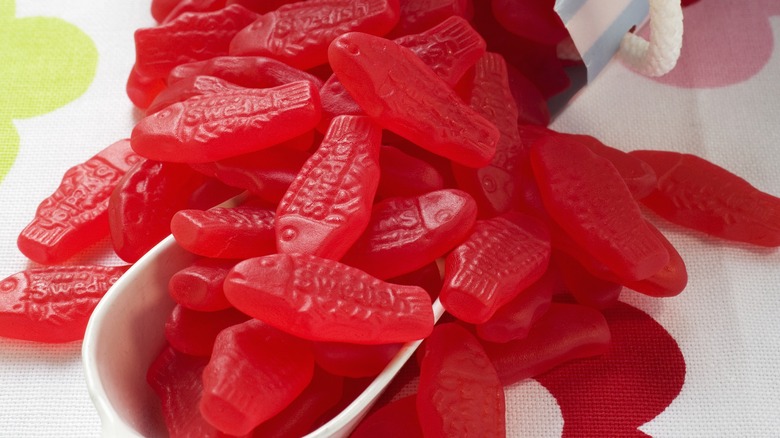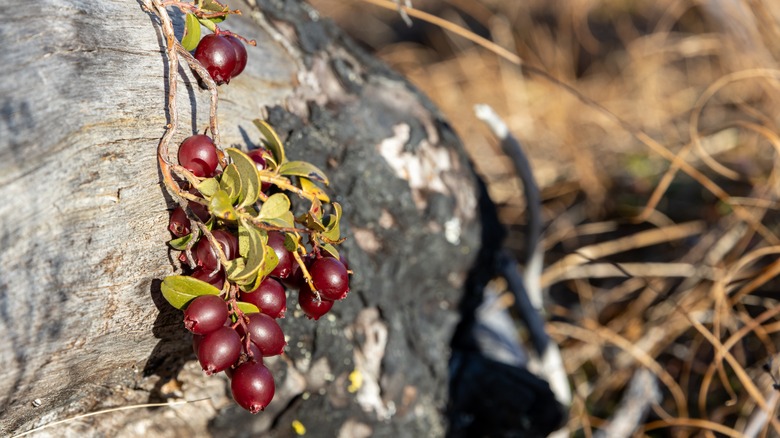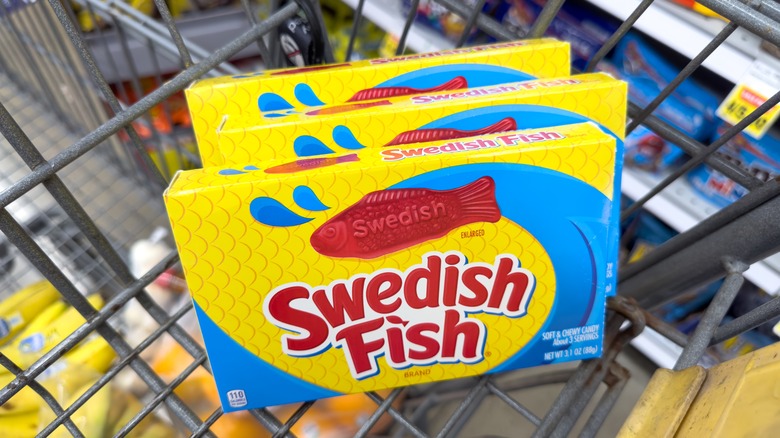What Do Swedish Fish Actually Taste Like?
Swedish Fish are colored a deep red, which means it's easy to assume they're cherry, raspberry, or strawberry-flavored. None of those really capture their taste, though. The candy's North American distributor Mondelez International (mostly famous for owning Nabisco) describes their flavor as "deliciously fruity" and "uniquely flavored." What does that actually mean?
If you look at their ingredients list, you don't get many hints: it's mostly sugar and corn syrup and vague "natural and artificial flavors." There are 23 grams of sugar for every serving of five fish candies, and since sweet flavors often come from sugar, that certainly contributes to its taste. There's also no gelatin unlike many other gummies, which means Swedish Fish are vegan candies. Still, there are no real answers regarding the candy's specific flavor.
Even with no official answer, people have certainly come up with strong guesses. The flavor of a standard, bite-sized Swedish Fish is probably lingonberry. Depending on where in the world you live, it's entirely possible you've never tasted one of those before.
The unusual lingonberry candy
A lingonberry is a small, bright red berry that grows in bunches, and is a close relative to the similarly red cranberry and the decidedly less red blueberry. They taste tart and slightly sweet, sort of like cranberries. Due to their acidic taste, they're commonly sweetened with things like sugar before they're eaten. The lingonberry does grow across North America, but it's more popular and more commonly used for flavorings in Europe, especially Scandinavia. Those inexpensive Swedish meatballs in IKEA can come served with lingonberry jam, for example.
How do we know that Swedish Fish are lingonberry flavored? It's partly speculation, but those who are more familiar with lingonberries often feel that the flavors match up or that they're close enough, alongside lingonberries' general popularity in Sweden. The red fish candies have a similar mix of tart and sweet flavors, although the flavor is altered (and sweetened) even more for the American version, and the original Swedish version uses slightly different ingredients. Still, there's some ambiguity — Americans who are more familiar with cherries than lingonberries might swear that Swedish Fish taste cherry-flavored, and it could be a mix of different berries.
How Swedish Fish swam onto shelves
It doesn't help that there are plenty of other Swedish Fish flavors besides the possibly lingonberry "red flavor" nowadays. You can find assorted packs of red, yellow, orange, and green Swedish Fish with different flavors, and there's a stronger consensus that orange ones are indeed orange-flavored, yellow is lemon, and green is lime (although some insist it's pineapple). You can also find bags of "tropical" Swedish Fish, where the flavors are explicitly said to be piña colada, tropical island, beachy punch, and passion fruit.
Those are just the American flavors. In Sweden, there's a black licorice-flavored version made by Malaco, the original creators of Swedish Fish. Malaco, based in Malmö in southern Sweden, first created the candies in the 1950s with the American market in mind. The Swedish version is often called "pastellfiskar," which translates to "pastel fish," and the candies have "Malaco" written on their sides instead of the word "Swedish" found on the American version. All Swedish Fish are wine gums (a sticky candy with no wine), which makes them light enough to be great frozen yogurt toppings, and they're distinctly fruity even if the fruit's hard to place.


